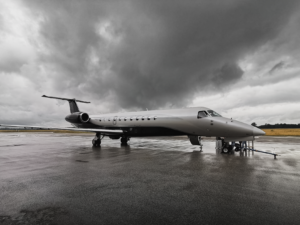15 Sep Challenges for CAMO
The Busiest Travel Time of the Year:
Challenges for Technical Aircraft Management
 We’re in the middle of the busiest weeks for air travel of the year, and airlines are on strike across Europe. After Covid travel restrictions have been lifted in the region, travelers are more eager than ever to travel during their holidays. Amid this season of high demand, crew and ground personnel are striking, demanding better pay and an increased workforce to cope with increased demand. As a result, airline passengers are faced with canceled flights, long lines at airports, and delayed or lost luggage.
We’re in the middle of the busiest weeks for air travel of the year, and airlines are on strike across Europe. After Covid travel restrictions have been lifted in the region, travelers are more eager than ever to travel during their holidays. Amid this season of high demand, crew and ground personnel are striking, demanding better pay and an increased workforce to cope with increased demand. As a result, airline passengers are faced with canceled flights, long lines at airports, and delayed or lost luggage.
In this environment, the attractivity of business aviation remains uncontested. Since the pandemic’s beginning in 2019, the business aviation market segment has seen strong growth, with flight numbers above 2019 levels almost continuously since summer 2020. Data from Eurocontrol shows that business aviation and all-cargo remain the only market segments at or above 2019 flight numbers with +25% and +2%, respectively. Moreover, numbers from the EBAA demonstrate that traffic from heavy jets is picking up again, and long-distance and extra-European flights are gaining momentum.
This increased activity level in the business aviation segment has concrete impacts on airworthiness and poses a challenge for technical aircraft management. Higher activity in individual aircraft means that the calendar time between checks and maintenance events that depend on flight hours or landings decreases. In busy times when operators need their aircraft to be available to transport customers and private owners require their planes to reach their destination, scheduling maintenance can be challenging. Additionally, MROs are busier with more checks and AOG repairs. To keep downtime at a minimum, meticulous planning is required from CAMO controllers, who need to consider the MRO’s availabilities and operations’ requirements. In the long term, high activity levels can also impact compliance management. Aircraft Maintenance Programs may need to be adjusted on account of high utilization.
In addition to the impact on maintenance planning, the high activity levels combined with the airline strikes currently complicate supply chain management and logistics. The current supply bottlenecks are not only due to higher demand but also due to the continued production shortfalls because of missing components. Once a part has been procured successfully, the additional challenge of delivering the part to the aircraft arises. Logistics has been challenging since the beginning of the pandemic. Still, the current strikes have further restricted access to onboard couriers who are crucial in delivering parts in AOG situations. This makes it even more challenging to get the right part to the aircraft quickly, keeping aircraft grounded for longer and operators from serving customers.
Coping with these challenges to profit from the high demand and favorable market conditions in the business aviation segment requires close cooperation between operations and technical management, ensuring that aircraft are airworthy.
Anna Gletthofer Marketing Manager, PRIMUS AERO
This article was originally published in Aviation Heaven Magazine in July 2022



